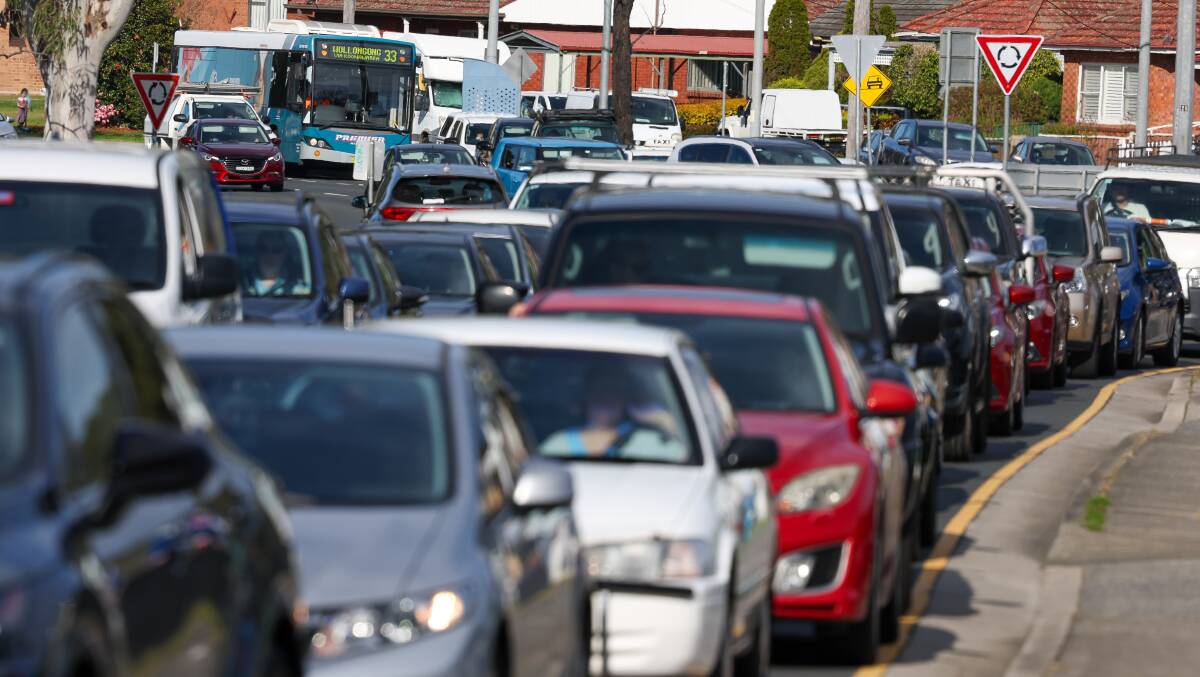
Wollongong and the Illawarra have been hampered by years of disjointed planning that has left the region with misplaced train stations, clogged and unsafe roads and public transport services that leave residents stranded.
Subscribe now for unlimited access.
$0/
(min cost $0)
or signup to continue reading
Now, both local and state governments are developing transport plans to address this, but without changes at both levels, the region could be left with more of the same, some are warning.
Member for Shellharbour and parliamentary secretary for roads and regional transport and roads Anna Watson said the Illawarra's key arterial links had not kept up with the area's rapid growth and changes to travelling patterns precipitated by the pandemic.
"For the last 20 years [the Princes Highway] has worked to a reasonable standard, but now with the population growth it's not working," she said.
Aside from a drop during the pandemic, when the pandemic closed off borders and overseas migration, the traditional driver of population growth in the Illawarra, the region's population has been growing steadily.
In 2021-22, the total number of people living in the region rose by 3410 people, an increase of 1.1 per cent and above the long-term average.
The Illawarra's population is forecast to continue to grow by more than 90,000 people by 2041.
This is already placing pressure on the region's infrastructure, as seen in daily traffic congestion and crash data, and is exacerbated by fewer workers making the daily commute to Sydney and instead relying on their cars for local trips within the region.
CEO of regional advisory body RDA Illawarra Debra Murphy said plans laid before the pandemic did not account for this shift.
"The world has flipped in the last few years, and the local roads can't cope, whether that's congestion or crash statistics," she said.
"Nobody's really recalibrated the local road system with that in mind."
Ms Watson is even more blunt.
"Overall, there's probably too many cars on the road."
While long-awaited projects such as the Dapto on and off ramps and the Yallah interchange would go someway to relieving the congestion, planners, politicians and bureaucrats agree that the Illawarra cannot widen and extend its roads system to solve this problem.
Instead the region will need to address the under-use of public transport.
"We have got an over-reliance on cars in the Illawarra and about half the NSW average of public transport usage," Ms Murphy said.
Since COVID, this has gotten worse, as bus and train patronage figures show. While there has been some rebound since the pandemic, neither bus nor train trips have reached 2019 levels in the Illawarra.
This has been compounded by poorly designed interchanges and fixed infrastructure such as stations, as Ms Watson pointed out.
"Look at Oak Flats station, you get off the train in the middle of nowhere, and I know there is a bus station there, but you get off the train and you see the buses pulling out. There's no connectivity there."
Plans developed prior to this shift would need to be recalibrated, Ms Murphy said, to take into account changes in commuter behaviour.
"Because we have so much more pressure on the system, we haven't caught up with the planning," Ms Murphy said. "We haven't actually factored into our thinking that we were going to start doing things differently."
In August 2021, Transport for NSW published the Illawarra-Shoalhaven Regional Transport Plan, which a spokesperson said would provide a blueprint for transforming all modes of transport over the next 20 years.
"It aims to increase access to public and active transport for the region."
The plan identifies 71 initiatives to increase public transport uptake, reduce travel times and make trips safer. These include major projects such as the Mount Ousley interchange to small scale projects such as improvements to traffic flow through the Bulli and Thirroul town centres. Some are identified as "in delivery", others are "in planning", however the bulk are "for investigation".
Ms Murphy said moving the projects from the "under investigation" column to the "in delivery" column would require pressure at various points within a large bureaucracy such as Transport.
"Transport for NSW is a massive department, it has many areas to it, and, like any big organisation, the left hand doesn't always talk to the right."
At a local level, a flurry of plans exist or are in development by Wollongong City Council, targeting separate areas of the transport monolith, including the City Centre Access and Movement Strategy, the Wollongong Cycling Strategy, the City of Wollongong Pedestrian Plan and the forthcoming Integrated Transport Strategy.
However for all the plans, data points and initiatives, change ultimately came down to what can get funded, a challenging task when governments have competing fiscal challenges.
"It's going to come down to money, everything comes down to funding," Ms Watson said. "We've just inherited a $188.5 billion debt from the former Liberal National government, so it's going to take us a while to fix that.
"There's got to be political will and I think that the areas that need the money most need to be prioritised first."
Our news app has had a makeover, making it faster and giving you access to even more great content. Download The Illawarra Mercury news app in the Apple Store and Google Play.


